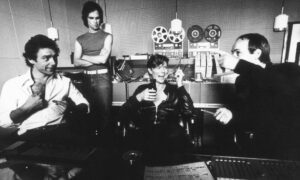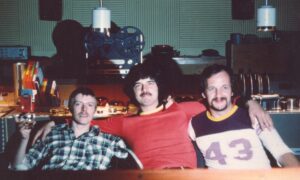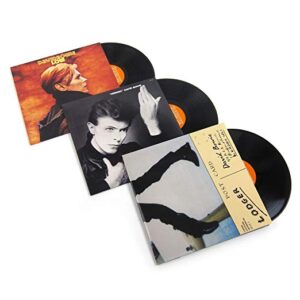 It is safe to say that no one influenced style, fashion and music in the way that David Bowie did during his 50-years career. Billboard even named him a “peerless rock star”, for the reason that he influenced more musical genres than any other rock star. From Glam Rock, to Folk, to Electronic, Pop, Grunge or Indie music, the British artist always left his touch.
It is safe to say that no one influenced style, fashion and music in the way that David Bowie did during his 50-years career. Billboard even named him a “peerless rock star”, for the reason that he influenced more musical genres than any other rock star. From Glam Rock, to Folk, to Electronic, Pop, Grunge or Indie music, the British artist always left his touch.
Nevertheless, out of all those rebirths, he himself described one of his experimentation as the best work he have ever done. In order to dive into that work, we need to immerse ourselves into that era.
West Berlin, January 1977
It had been a few months since David Bowie moved from the United States to Europe, in order to escape from the drug culture of Los Angeles. After traveling through Switzerland and France, he finally settled down in West Berlin. The anonymity following his recent commercial successes like Young Americans and Station to Station, helped him reconnect with himself and explore the German music scene. He fell in love with the work of Kraftwerk and Tangerine Dream, and with the whole Electronic and Ambient music scene.
Bowie quickly met Brian Eno, an English producer, and musician who notably played synth with Roxy Music. They both started to ideate on a rock-electronic-ambient music concept. Eno used a portable EMS Synthesizer. At that point, they phoned Tony Viconti, Bowie’s lifelong producer who showed up with a newly acquired Eventide H910 Harmonizer, which happened to be “the only one in the country”.
 This was the first steps of the production of three albums that would influence the music scene of the late seventies: the Berlin Trilogy.
This was the first steps of the production of three albums that would influence the music scene of the late seventies: the Berlin Trilogy.
The recordings actually started in France, at the Château d’Hérouville, outside of Paris. The trio was experimenting with the galaxy of new sounds their new tools would provide. They played with the pitch and dynamics, making radical sounds and spacey effects. That was the birth of Low.
However, because of some legal issues that Bowie had with a former manager, the band moved back to West Berlin and settled in the Hansa Tonstudio. Berlin was a much happier place for Bowie. There, he was able to hang out with his friend Iggy Pop who had just joined him. Moreover, the location of the Hansa Tonstudio, next to the Wall, and its history of propaganda music recordings shaped the sound of the trilogy. For instance, Subterraneans is about the people who were separated in East Berlin. Every room of the Hansa Studio has a completely different acoustic and recording from one room to another changed the sounds dramatically. Brian Eno had this idea to record a small group of six musicians in the studio’s Grand Hall, which could host up to 150 musicians. The way he positioned microphones in the hall shaped Heroes’ sound. Lodger, the last album of the trilogy was recorded between Berlin and New York.
When he arrived in 1976, Bowie happened to record at the Hansa Studio by accident but, later on, it ended up attracting many artists, from Depeche Mode to U2.
 Release and Legacy of Berlin Trilogy
Release and Legacy of Berlin Trilogy
The Berlin Trilogy, and Low in peculiar, had and still has a considerable impact on music. Visconti said that they were freewheeling, “making their own rules”. They used new electronic tools and experimented on the composition of a song. They had this determination “to stand apart from the stereotypical American chord sequences” said Bowie.
“If I never made another album, it really wouldn’t matter now. My complete being is within those three. They are my DNA.” -David Bowie
Even if, following its release, the semi instrumental album received mixed critics because of its unconventionality (RCA initially refused to release it because it was not commercial enough), it brought “electronic avant-pop” and “art-rock” music to the forefront. In 2013, NME named the album the 14th best of all time.
Ultimate Classic Rock considers Low as being forward-looking: “upon its release, no mainstream artist had dared to issue an album so ahead of its time”.
The genius of Bowie, Eno and Visconti matched with the historical Hansa Tonstudio birthed a hybrid of electronic and rock music and brought the newborn to a mainstream audience.
Contributed in collaboration with Romain Nicoletti a writer from The Clive Davis Institute x Billboard MUSIC INDUSTRY ESSENTIALS program.

 Release and Legacy of Berlin Trilogy
Release and Legacy of Berlin Trilogy